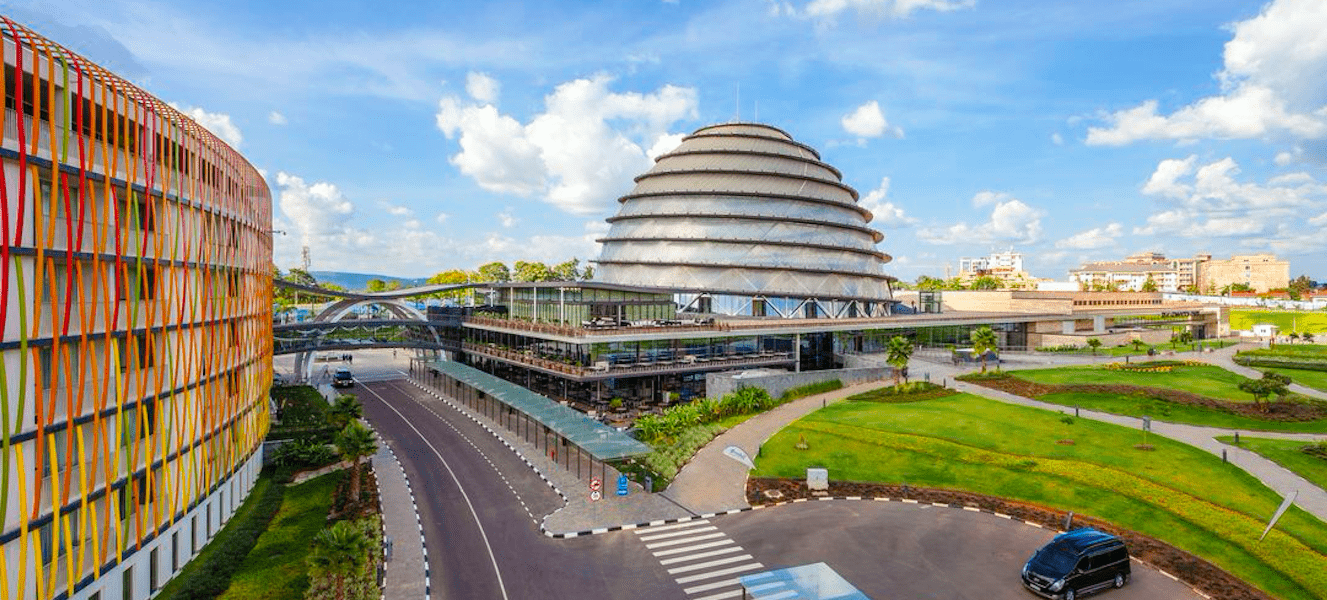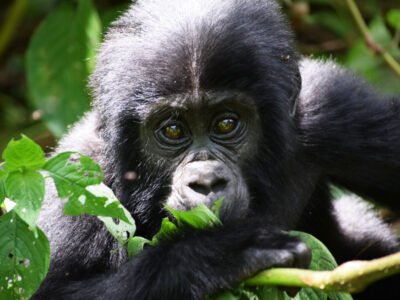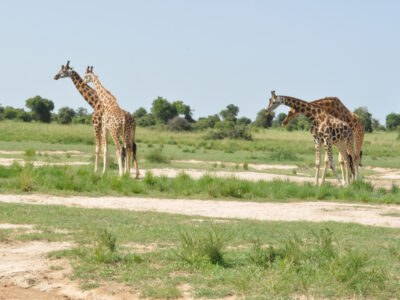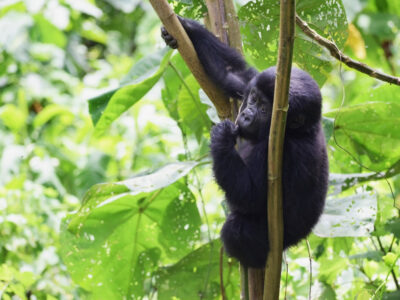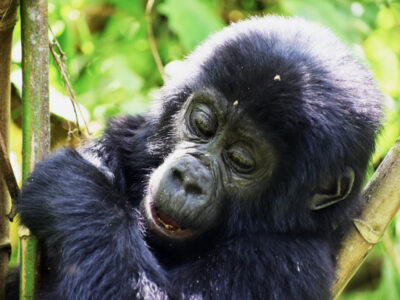Rwanda is a land of thousand hills bordering Uganda, democratic republic of Congo, Tanzania and Burundi as a landlocked country. Rwanda is the cleanest country in East Africa and their people are called Rwandese who embrace peace and reconciliation. Rwanda has been governed by the RPF as a de facto one-party state since 1994 with former commander Paul Kagame as President since 2000.
Rwandans are drawn from just one cultural and linguistic group which is Banyarwanda with sub groups called Hutu, Tutsi and Twa. The Twa are a forest-dwelling pygmy people and are often considered descendants of Rwanda’s earliest inhabitants. Christianity is the largest religion in the country; the principal and national language is Kinyarwanda, spoken by native Rwandans, with English, French and Swahili serving as additional official foreign languages
Historical attraction.
Kigali Gerocide memorial
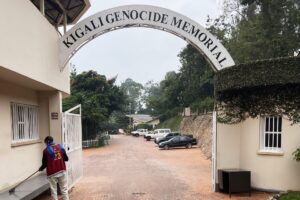
Kigali Gerocide memorial is located in Gisozi, Rwanda, just outside of central Kigali. Gerocide memorial was inaugurated in 2004, the Kigali Genocide Memorial is the final resting place for more than 250,000 victims of the Genocide against the Tutsi. This memorial also serves to educate about how the Genocide against the Tutsi took shape and examines genocide in the 20th century.
The wall of names is dedicated to those who died and is a work still in progress. Many of the victims’ names have yet to be gathered and documented and many of the victims who rest in the graves are unknown. Annually Kigali gerocide is memorized as a country to mourn those who dies during the war.
Kings palace museum Nyanzi.
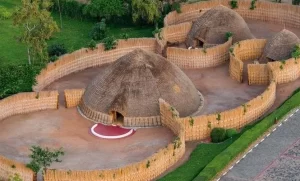
Kings palace museum is located in southern part of Rwanda. The palace is beautifully -crafted thatched dwelling shaped like a beehive and is highly visited by tourists due to their amazing culture. According the old tradition, the palace used to be the heart of Rwanda and as the place for battles and power struggles.
For a long time, the monarchy was mobile, moving the court between various locations. When it eventually settled in one place, Nyanza was the obvious choice. The palace is a home of about 2000 people who live in huts built in grass thatched shape. At the back live a few long-horned Inyambo cattle, descended from the king’s herd, whose keepers carefully tend and sing to them, keeping alive a unique tradition.
The elegant cows, derived from the wider Ankole breed, played an important role during ceremonies in honour of the king. They were decorated with rich jewellery, and were taught to listen to a trainer’s songs and follow his movements in a stately parade.
Ethnographic Museum.
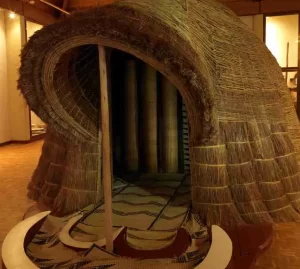
The Ethnographic Museum is formerly the National Museum of Rwanda, is located in Huye district in the Southern Province. Belgian government helped the museum opened its doors to the public in 1989. It is a rich source of information on the cultural history of Rwanda.
The exhibits open with geographical and geological displays, moving on to items used in hunting, agriculture, animal husbandry, pottery, weaving and woodwork. Traditional clothing and architectural methods are also illustrated, as well as the social importance of cattle. Descendants of the royal herd can be seen to this day at the King’s Palace in nearby Nyanza. The final room reveals traditional customs and beliefs, history, culture, poetry and oral tradition and cosmology. There are also a highly regarded craft centre on site.
Nyamata Gerrocide memorial.
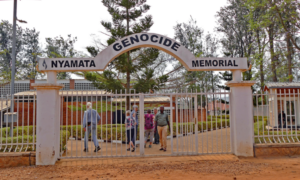
The Nyamata Genocide Memorial is a national memorial which is located in Nyamata parish and is World Heritage Site in Rwanda commemorating the 1994 Rwandan genocide against the Tutsi ethnic group. The Nyama gerocide was desacralized by the Roman Catholic Church on 11th April 1997 and transformed into a memorial to the victims of the genocide. One person is buried inside the church, which also houses victims’ clothes and their belongings. Mass graves are situated behind the church, containing 45,308 genocide victims. The 11th of April every year is dedicated to the commemoration of the victims killed at this site. According to Leon Muberuka, a guide at Nyamata, the number of victims includes those who were killed inside the church, as well as others who were exhumed from surrounding areas.
Murambi Gerocide memorial.
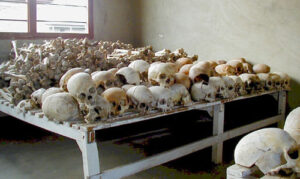
Murambi Geocide memorial is situated near the town of Murambi in southern Rwanda and formerly known as Murambi Technocal school. The murambi Gerocide memorial is a UNESCO heritage site which is one of the sites of 1994 gerocide against the Tutsi. Tutsi hide in a technical school by then where they thought they will be protected by French troops but the Hutu found them and killed over 20,000 Tutsi. However other Tutsi people tried to escape over 50,000 but they were located in church where they were all killed. The death toll of around 50,000 given by the government is not supported by the number of bodies exhumed, even considering yet to be opened graves and unburied bodies. According to the guide at the memorial, the French brought in heavy equipment to dig several pits where many thousands of bodies were placed. Since then the massacre of Tutsi was marked to always be remembered and honored annually in Rwanda.
Iby’iwacu cultural village.

Despite the fact that the Iby’iwacu cultural village neigbours volcano national park, it makes the village the best destination for visitors of nature walk since it is more of community-based tourism. The community develop their community though basket weaving, art and craft work, education facilities, offering agricultural support, offer healthy advisory, providing clean water, and many more.
Kandt House Museum.
The Kandt House Museum is located in what is now the city of Kigali, Nyarugenge District, westbound. The museum is formerly known as known as the Natural History Museum. The Kandt House Museum in Kigali is a remarkable testament to Rwanda’s resilience and the shared history between Germany and Rwanda. It stands as a compelling invitation to explore and appreciate the rich tapestry of Rwandan history and its natural beauty.
This immersive exploration of history continues in the second part of the museum, where the focus shifts to the period of colonial rule that began after the Berlin Conference in 1884. Here, you’ll delve into the life and times of Richard Kandt, navigating his deeds and tenure in Rwanda which lasted until 1916 when the Belgians, under the League of Nations Mandate, took over following the First World War.
Rwanda Art Museum

The Rwanda Art Museum in Kigali now serves as a vibrant showcase for contemporary art from Rwanda and beyond. The museum aspires to provide a glimpse into the uniqueness of Rwandan creativity, tracing the evolution of art from ancient times to the present day. It explores the harmonious fusion of traditional and modern artistic expressions.
Ntarama genocide memorial
Ntarama genocide memorial is also one of the genocide museums in Rwanda. Ntarama is the largest city in the country located in Bugesera District in southern part of Kigali. Ntarama genocide memorial is where five thousand people were killed here in the Catholic church during the Hutu and Tusti war in 1994. The bodies of the dead would be hastily buried in mass graves. The people inside, who had tried to escape, were killed in nearby fields while the majority were killed inside the building of the church.

